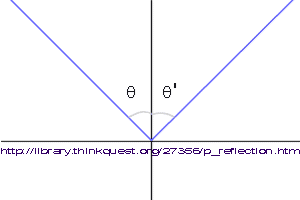
Light
According to a lecture presented by Professor Newman, light is either a particle or a wave, when looking at it as a particle then it is not a wave, when looking at it as a wave then it is not a particle. Light waves travel in a straight line unless harnessed by something like a tube or a telescope, or it can also be reflected, refracted, or diffracted. When reflected or refracted it will still travel in a straight line afterward the only difference is that it will be at an angle from the light source. When it is diffracted, for instance, traveling through a slit, it will then spread out. As shown below in a single-slit diffraction pattern.
This depicts diffraction as light shines through two slits under a narrow laser beam. The dark sections are the areas in which there was destructive interference and the bright spots are where there was constructive interference.

http://imagers.gsfc.nasa.gov/ems/visible.html
Visible light is the light that can be seen with the naked eye and the only EM waves that we can see. There are three primary colors, red, green, and blue, the three colors added together make up white light that is seen by our eye, as in sunlight, white light light bulbs etc. The three primary colors also make up the complimentary colors, such as magenta (red + blue), cyan (blue + green), and yellow (red + green) and if a different combination of these were combined, they would produce other colors as seen by our eye. A color of a tee-shirt is going to reflect the light of the color of the tee-shirt while absorbing the light of the absent colors, therefore that is why the eye sees it as that particular color.

This shows how the light will come in at an angle q and then to be reflected at an angle q'.
Refraction: to see some interactive physics including refraction go to this site: Library Think Quest
|Title|Introduction|Wave|Light|Heat|Radio|Bibliography|Related Sites|